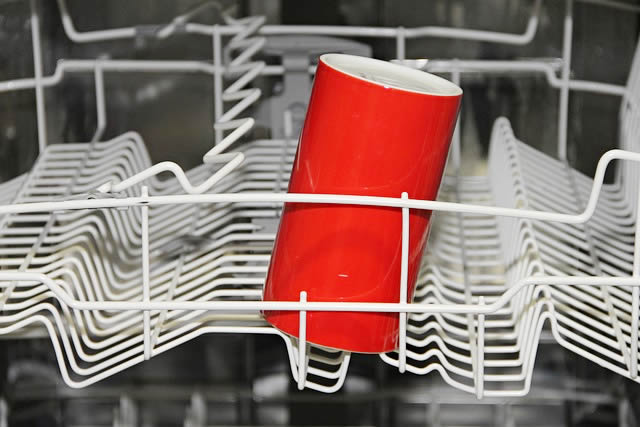先日から「Why plastic doesn’t dry in the dishwasher -「食洗機でプラスチックが乾かせない理由」を読んでいます。

・「食洗機でプラスチックが乾かせない理由」(1)
・「食洗機でプラスチックが乾かせない理由」(2)
・「食洗機でプラスチックが乾かせない理由」(3)
As water won’t always play ball and dry evenly from every surface, dishwasher designers have had to come up with other methods to hasten drying,
全ての面で均等に水が乾くとは限らないため、食洗機の設計者は、乾燥を早める別の方法を考えねばなりませんでした、
says Jacqueline Mariani, a home economist and consultant who has worked with dishwasher manufacturers.
と、食洗機メーカーとの仕事の経験がある、家庭経済学者でコンサルタントのジャクリーヌ・マリアーニ氏。
“Some brands have introduced a fan drying system to circulate the warm air around the cabinet during the ‘drying cycle’ to hasten drying.
「乾燥中に温風を庫内に循環させ、乾燥を早めるファン乾燥システムを導入しているブランドもあります。
Less expensive models will have a static drying system (no fan, and just relying on the convection currents within the cabin) which is not so effective.
安価なモデルでは、静止型乾燥システム(ファンを使わず、庫内の対流に頼る)を採用していますが、これはあまり効果的ではありません。
Others have introduced a door that will automatically pop ajar by a few millimetres which lets in cooler air to hasten circulation and drying.”
また自動的にドアが数ミリ開き、冷たい空気を取り入れることで循環を促し、乾燥を促進するものもあります。」
ajar「少し開いて、半開きで、~と不和の状態で、調和しないで」。
Mariani adds that whatever the method, plastic items usually still need a wipe with a cloth to remove excess water.
マリアーニ氏によると、どんな方法であれ、プラスチック製品は布で拭いて余分な水分を取り除く必要があるという。
The issue may have come about partly through oversight;
この問題は一部、見落としによってもたらされた可能性がある、
oversight「見落とし、手落ち、監視、監督」。
when new dishwasher models are tested, the typical test load doesn’t actually include any plastic objects, despite their widespread kitchen use,
食洗機の新モデルをテストする際、キッチンで広く使われているにもかかわらず、一般的なテスト過程で実際にはプラスチック製品は含まれていない、
according to GE Appliances director of engineering Adam Hoffman.
と、GEアプライアンスのエンジニアリングディレクターであるアダム・ホフマン氏。
まあ一つだけ異質なプラスチック製品を混ぜてしまうと、現在の方式では洗浄・乾燥テストが完了出来ないのでしょうね。
もしも「プラスチック専用」食洗器となれば製作可能かもしれませんが、それでは一般に広く売れません。
結構、解決が難しい問題なんですね(びっくり)。
理由は単純明快!「少ないコストでしっかり楽しく学べるから」。
私自身の経験(高機能でビックリ)をびっしり書いていますので、良かったら読んでみてください。
下のバナーからどうぞ!






